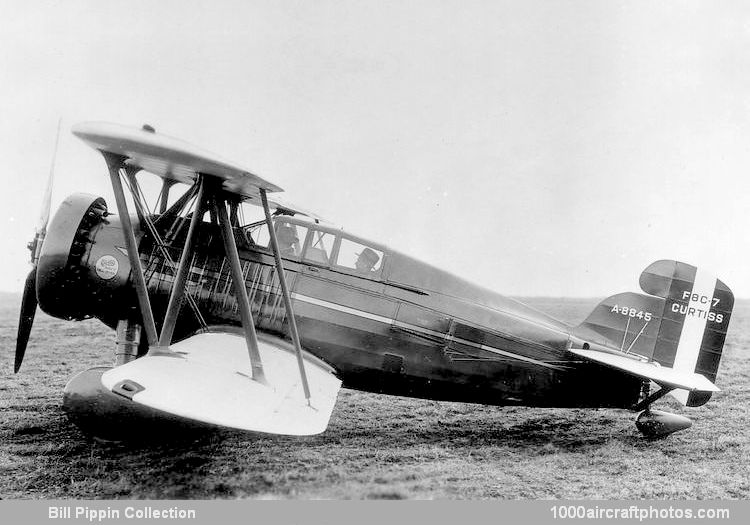11/30/2019. Remarks by Johan Visschedijk: "Two Model 49C prototypes of improved Helldiver biplanes were introduced at Garden City, New York, in August and September 1930. As company-owned demonstrators they carried civil registrations but USN coloring and markings, later the USN bought both aircraft. The major change was the use of a 575 hp Wright R-1820-64 Cyclone engine and the addition of closed canopies to the cockpits.
On the first Cyclone-powered model (pictured above), the aft turtledeck was raised to streamline the canopy into the fuselage contours. Later, streamlining was improved still further by the addition of cuffs to the terminals of the flying wires. Curtiss identified this civil aircraft as Helldiver Cyclone Command, but registered it as Helldiver A-4 (registration 984V, c/n 1). When the USN acquired the aircraft in November 1930 it was designated F8C-7 with BuNo. A-8845. It was used as the personal transport of the then Assistant Secretary of the Navy for Aviation, David S. Ingalls, the Navy's only WW I ace. Subsequently it was redesignated XO2C-2 and O2C-2, but reverted to F8C-7 before being surveyed in March 1934, with 377 hr flying time.
The second Cyclone-powered model had standard armament and was identified by Curtiss as the Cyclone Military Helldiver. It was registered as Helldiver A-3, also with c/n 1, and carried registration 983V. This was also acquired by the USN in November 1930 as XF8C-8 (BuNo. A-8847), later it became O2C-2, XF10C-1, and XS3C-1. Reportedly it crashed in February 1932.
Also in November 1930, the USN ordered two additional XF8C-8 examples under the designation O2C-2 and BuNos. A-8848 and A-8849, later these were temporarily redesignated as XF8C-8. In June 1933 A-8849 was also returned to Curtiss and became a test bed for the 650 hp Wright R-1510 engine. In July 1933 it caught fire in flight and crashed. The fate of A-8848 is unknown."
